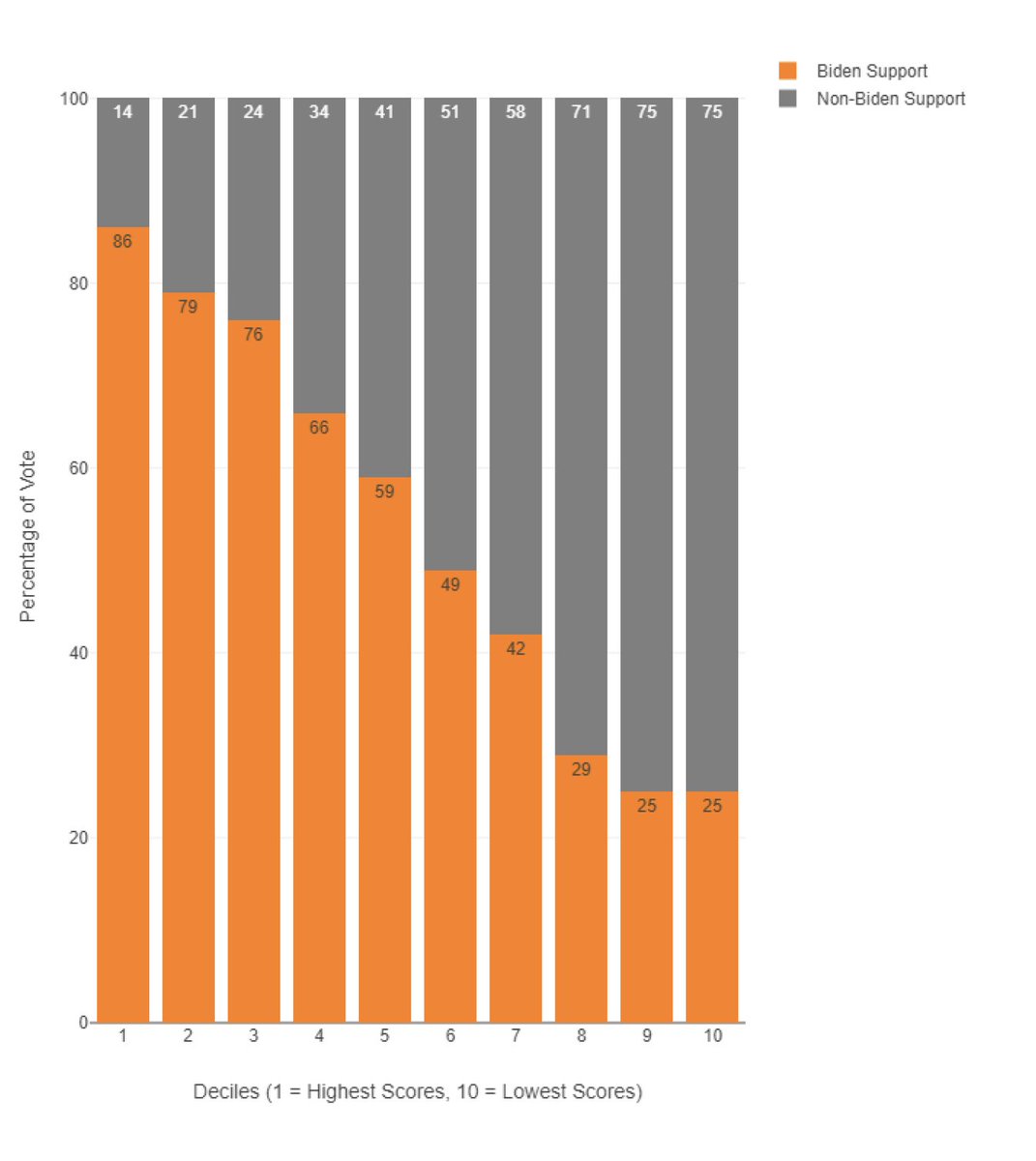
Our update went live last night. We saw a slight turn towards Dems in OH and WI in the reported AVEV data, and MI appears to have generally stayed the same.
targetearly.targetsmart.com/index.html
targetearly.targetsmart.com/index.html
https://twitter.com/tbonier/status/1316711867994251264
There's still evidence that the partisan model rollup in these states is overly Republican. If you look at the model distribution, you'll see that there is a cluster of voters at the low end of the score (GOP) but no such cluster at the Dem end. 

That said, the model does a good job of rank ordering voters in terms of likely partisanship, an improvement upon the prior partisanship score. 

My assessment at this point is that we are presenting a somewhat more pessimistic view of the Dem turnout among AVEV in MI, WI, and OH than is likely occuring. Take that as context as you evaluate these states. In the end these are models, not predictions of vote choice.
• • •
Missing some Tweet in this thread? You can try to
force a refresh










